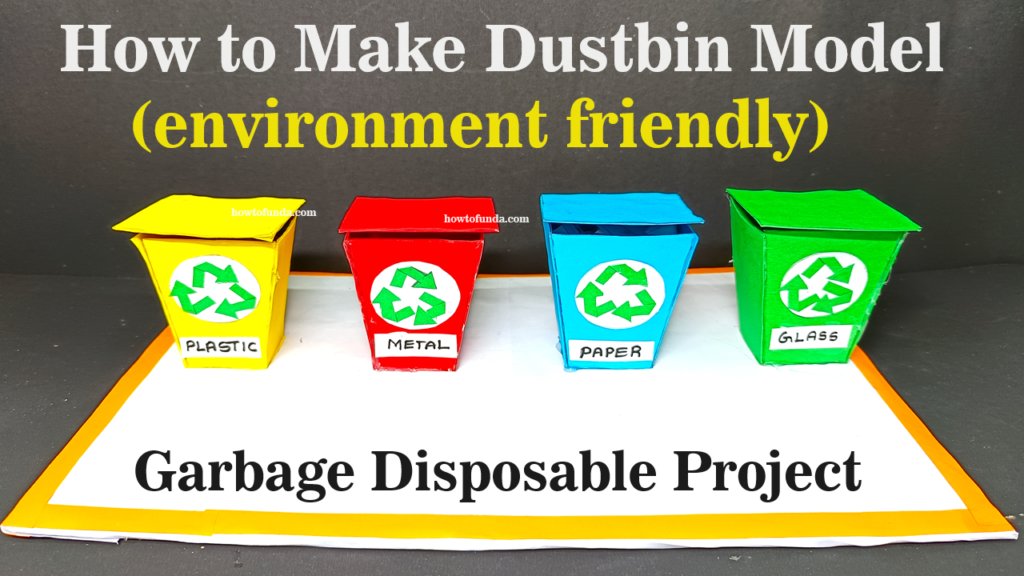Creating four types of dustbin models for an environmentally friendly science school project using cardboard and color paper is a great idea! Here’s how you can make them:

Materials Needed:
- Cardboard
- Color paper (green, blue, yellow, and red)
- Scissors
- Glue
- Marker
- Ruler
Types of Dustbins:
- General Waste (Green)
- Recyclable Waste (Blue)
- Organic Waste (Yellow)
- Hazardous Waste (Red)
Step by Step Video Instructions:
- General Waste Dustbin (Green):
- Cut a large rectangular piece of cardboard for the main body of the dustbin.
- Cover the cardboard with green color paper.
- Cut out a round lid from cardboard and cover it with green paper as well.
- Attach the lid to the top of the main body using a hinge made of cardboard or tape.
- Write “General Waste” on the front of the dustbin using a marker.
- Optionally, you can add pictures or symbols representing general waste.
- Recyclable Waste Dustbin (Blue):
- Follow the same steps as for the general waste dustbin, but cover the cardboard with blue color paper instead.
- Write “Recyclable Waste” on the front of the dustbin.
- Optionally, add symbols or pictures representing recyclable items like bottles, cans, etc.
- Organic Waste Dustbin (Yellow):
- Repeat the process for the main body and lid using yellow color paper.
- Write “Organic Waste” on the front.
- To create a composting effect, you can cut out a small door on the side of the dustbin.
- Glue a piece of mesh or netting over the door to allow air circulation.
- Optionally, add pictures or symbols representing organic waste like fruits, vegetables, etc.
- Hazardous Waste Dustbin (Red):
- Make a smaller-sized dustbin for hazardous waste to differentiate it from others.
- Cover the cardboard with red color paper.
- Write “Hazardous Waste” on the front.
- Optionally, add warning symbols like skull and crossbones or the “hazardous” label.
Once you’ve created all four types of dustbins, you can arrange them together as a set. You can also add labels or signs above each dustbin to indicate its purpose.
This project not only helps in understanding waste segregation but also promotes environmental awareness.
It’s a visually appealing and educational addition to any science fair or school project display!

